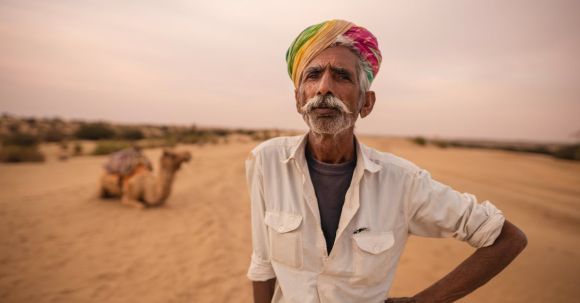India is a country rich in history, culture, and traditions. As a traveler or a visitor to this vibrant nation, it is important to be aware of the cultural etiquette to ensure a respectful and enjoyable experience. Here are some useful tips to help you navigate the cultural landscape of India.
Greetings and Personal Space
When greeting someone in India, it is customary to use the traditional Indian greeting, “Namaste.” This is done by pressing your palms together in front of your chest and saying “Namaste” with a slight bow. This gesture is a sign of respect and is widely accepted across the country.
Personal space in India is generally smaller compared to Western standards. It is common for people to stand close to each other while conversing or queuing. Don’t be alarmed if someone stands too close, as it is a cultural norm.
Dress Code
India is a conservative country, and it is important to dress modestly, especially when visiting religious sites or rural areas. Both men and women should avoid wearing revealing clothing or clothing that may be considered inappropriate, such as shorts or tank tops. It is also customary to remove your shoes before entering temples or someone’s home.
Eating Etiquette
When eating in India, it is customary to eat with your right hand. The left hand is considered unclean and is generally used for personal hygiene purposes. If you are not comfortable eating with your hand, it is acceptable to use cutlery, especially in urban areas.
It is also important to remember that many Indians are vegetarian or have dietary restrictions based on religious beliefs. When dining with locals, it is polite to ask about their preferences and avoid offering them food that may not align with their dietary choices.
Religious Etiquette
India is a diverse country with various religious beliefs and practices. When visiting religious sites, it is important to dress appropriately and follow any specific guidelines provided. Modest attire, covering your head, and removing your shoes are common requirements in many temples and mosques.
It is also important to respect religious customs and practices. Avoid touching or taking photographs of religious objects without permission. If you are unsure about any specific customs, it is best to observe and follow the lead of others.
Communication
In India, communication is often indirect and can be influenced by hierarchical structures. It is important to remain respectful and avoid confrontational or aggressive behavior. Indians value harmony and may avoid saying “no” directly. Instead, they may use phrases like “maybe” or “I will try.”
When engaging in conversation, it is best to listen actively and show genuine interest in the person you are speaking to. Indians appreciate polite small talk and may ask personal questions about your family or background. It is acceptable to reciprocate these questions, but be mindful of the level of information you share.
Conclusion: Embrace the Cultural Diversity
India is a country that celebrates its rich cultural diversity. By understanding and respecting the cultural etiquette, you can have a more meaningful and enjoyable experience during your visit. Remember to greet others with a “Namaste,” dress modestly, eat with your right hand, respect religious customs, and communicate in a polite and indirect manner. Embrace the vibrant tapestry of India’s culture and you will create lasting memories.



